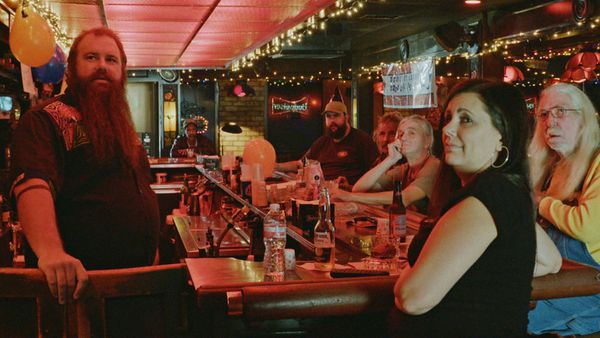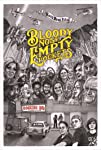Eye For Film >> Movies >> Bloody Nose, Empty Pockets (2020) Film Review
Bloody Nose, Empty Pockets
Reviewed by: Jeremy Mathews

The dive bar is its own unique gathering place. It has the same sense of community as a church, but with bawdier conversation, more colourful characters and a few more passed-out people at closing time. Bill and Turner Ross’s Bloody Nose, Empty Pockets is an elegy to a particular brand of drinking establishment: low-key, without sleek design or expensive flare, but where, like in the sitcom bar, everybody knows your name.
The movie takes place from open to close on the final day of business at Roaring 20s, a Las Vegas dive bar that sits unassumingly away from the flash and flare of the strip. It’s the kind of watering hole that might not have a place in a world that increasingly prioritises high profit margins over lower operating costs. And it also provides an endlessly fascinating display of human thought and behaviour.

It’s late 2016, the dawning of the age of Trump in America, and no one is all that certain where they or the country are heading. Regulars drift in and out, a drunkard who is supposed to to be at work gets stuffed in a cab, bartenders change shifts, old friends get reacquainted, generations argue with each other, the bartender's son and his friends make trouble outside, and one loyal customer starts and ends the day asleep. Like in a real bar, things can be hazy and the dramatic beats don’t all resolve themselves, but there are magical moments of truth.
The film caught a little flack from certain audience members at the Sundance Film Festival because it was in the US Documentary Competition, yet it isn’t a strictly reality-based endeavour. The Ross brothers are completely frank about which aspects of it are real and which are manufactured. Bloody Nose, indeed, features real people interacting with each other in unscripted conversation, but it also takes place in a setting that doesn’t actually exist. There is no dive bar called Roaring 20s, and the bar was in New Orleans, not Las Vegas. It was also shot during multiples days, including exteriors in Vegas. The participants were mostly cast off the street by the filmmakers, who searched for all the archetypes they wanted to bring into the location.
The controversy is no fault of the filmmakers — who are completely frank about their production methods, even if they aren’t compelled to explain those methods on a title card. And it’s only the fault of Sundance so much as their festival categories don’t quite capture the nuance of this hybrid of fiction and non-fiction. Some would argue that documentary filmmakers are often compelled to stage or manipulate things from behind the camera or in the editing room, so is it really any worse to openly look for ways to jump start fascinating human behaviour for the camera?
While the roaming handheld cameras bring to mind observational documentaries, the aesthetic also evokes Robert Altman through its observational style and rich tapestry of characters. In some ways, this production technique feels like the full realisation of Altman’s passion for letting both the camera and sound roam around to capture an active, layered environment. At certain moments, the background action during a conversation feels so glorious that it’s hard to believe it wasn’t meticulously blocked out.
The conversation can be funny, philosophical, nostalgic, rueful or political. Sometimes, it sneaks up on you with deep emotions. Other times, it revolves around a woman offering to display her “60-year-old titties”. But even wen barflies are drunkenly angling for a fight, there’s a sense of community that shines through. Roaring 20s may not actually exist, but watching the movie, it feels as vivid as any place you’ve ever popped into for a cheap pint.
Reviewed on: 07 May 2020
















